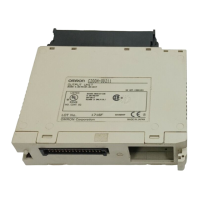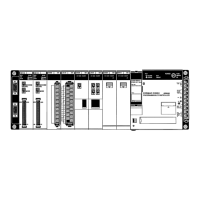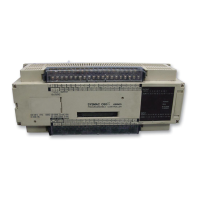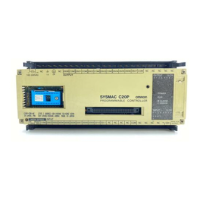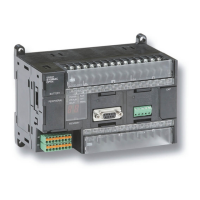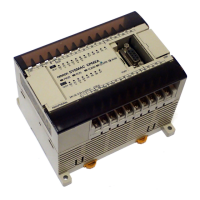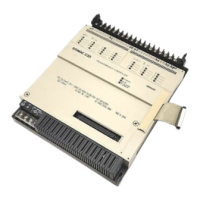107
If
IR 00000 in the above diagram is OFF (i.e., if the execution condition for the
first INTERLOCK instruction is OFF), instructions 1 through 4 would be ex-
ecuted
with OFF execution conditions and execution would move to the instruc
-
tion
following the INTERLOCK CLEAR instruction. If IR 00000 is ON, the status
of
IR 00001 would be loaded as the execution condition for instruction
1 and then
the
status of IR 00002 would be loaded
to form the execution condition for the
second
INTERLOCK instruction. If IR 00002 is OFF
, instructions 2 through 4
will
be executed with OFF execution conditions. If IR 00002 is ON, IR 00003, IR
00005,
and IR 00006 will determine the first execution condition in new instruc
-
tion lines.
4-7-8 Jumps
A
specific section of a
program can be skipped according to a designated execu
-
tion
condition. Although this is similar to what happens when the execution con
-
dition
for an INTERLOCK instruction is OFF
, with jumps,
the operands for all in
-
structions
maintain status. Jumps can therefore be used to control devices that
require
a sustained output, e.g., pneumatics and hydraulics, whereas interlocks
can
be used to control devices that do not required
a sustained output, e.g., elec
-
tronic instruments.
Jumps are created using the JUMP (JMP(04)) and JUMP END (JME(05)) in-
structions.
If the execution condition for a JUMP instruction is ON, the program
is
executed
normally as if
the jump did not exist. If the execution condition for the
JUMP instruction is OFF, program execution moves immediately to a JUMP
END
instruction without changing the status of anything between the JUMP and
JUMP END instruction.
All
JUMP and JUMP END instructions are assigned jump numbers ranging be
-
tween
00 and 99. There are two types of jumps.
The jump number used deter
-
mines the type of jump.
A
jump can be defined using jump numbers 01 through 99 only once,
i.e., each of
these numbers can be used once in a JUMP instruction and once in a JUMP
END instruction. When a JUMP instruction assigned one of these numbers is
executed,
execution moves immediately
to the JUMP END instruction that has
the
same number as if all of the instruction between them did
not exist. Diagram
B
from the TR bit and interlock example could be redrawn as shown below using
a
jump. Although 01 has been used as the jump number
, any number between
01
and 99 could be used as long as it has not already been used in a dif
ferent part
of the program. JUMP and JUMP END require no other operand and JUMP END
never has conditions on the instruction line leading to it.
Instruction
1
00002
00000
Instruction 2
Diagram B: Corrected with a Jump
00001
JME(05) 01
JMP(04) 01
Address Instruction Operands
00000 LD 00000
00001 JMP(04) 01
00002 LD 00001
00003 Instruction
1
00004 LD 00002
00005
Instruction 2
00006 JME(05) 015
This
version of diagram B would have a shorter execution time when 00000 was
OFF than any of the other versions.
Inputting, Modifying, and Checking the Program Section 4-7
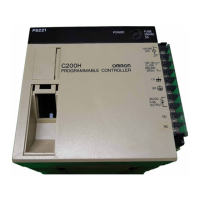
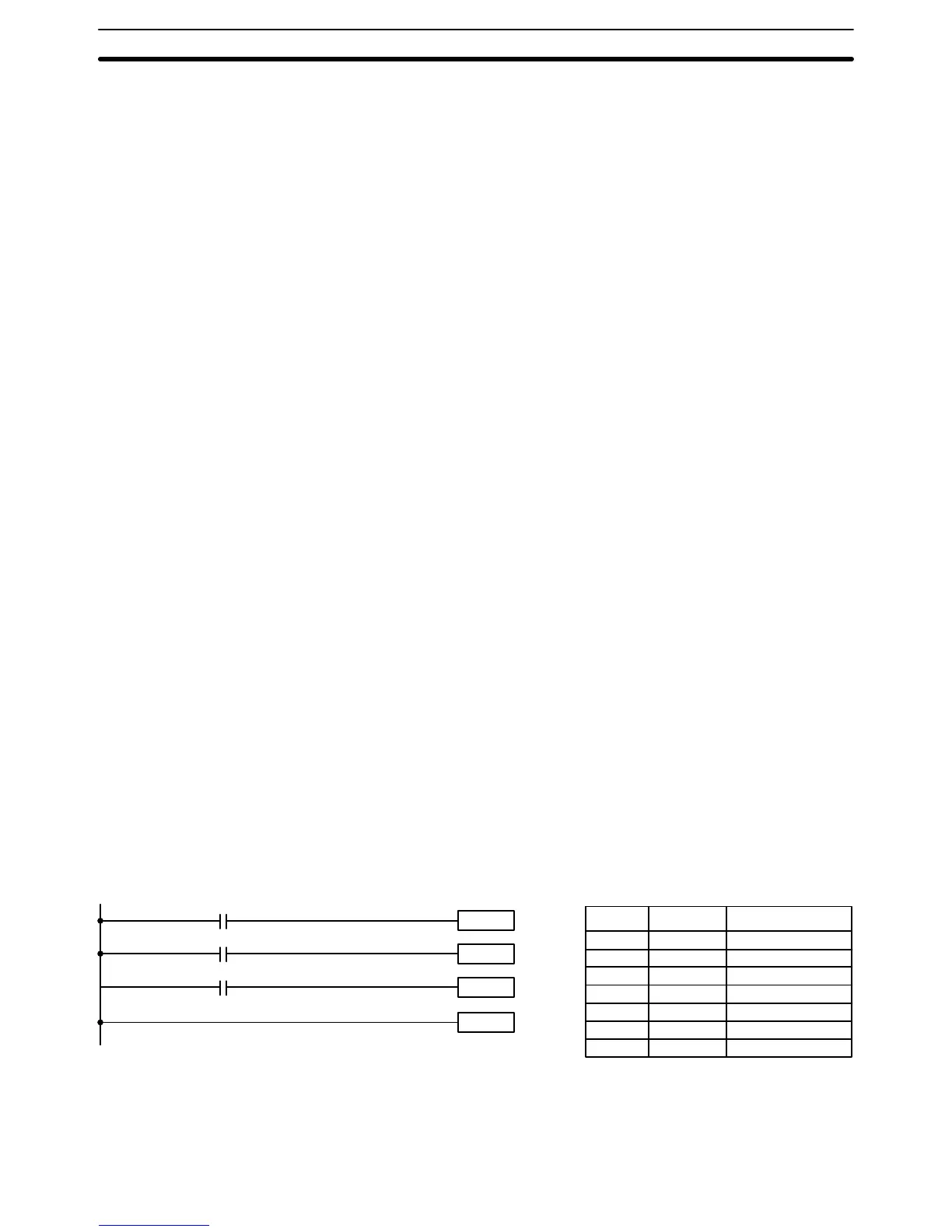